Retinal Support & Vitamin A
Symptoms
Treatment
Complementary treatment
Photoreceptors
While vitamin A is generally recommended to help heal retinal conditions, there are some inherited forms of retinal deterioration where impaired utilization of vitamin A results in deposits in the photoreceptor layer of the retina. In these cases (e.g. Stargardt's) vitamin A supplementation should be avoided.
Vitamins
& Supplements
Not sure which to get?For help call us at 845.475.4158
Complete Product List
Discount Packages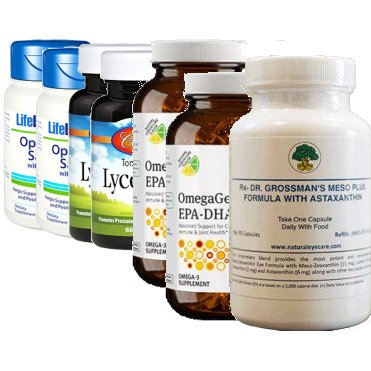 Stargardt's Package 1 (3-month supply) Stargardt's Package 1 (3-month supply)Retinal Support protocol that excludes vitamin A and betacarotene as well as other carotenoids that can be converted by the body to Vitamin A. 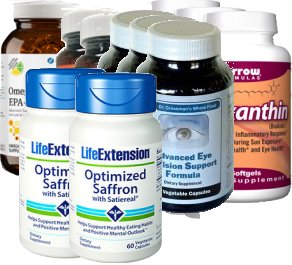 Stargardt's Package 2 (3-month supply) Stargardt's Package 2 (3-month supply)Retinal Support protocol that excludes vitamin A and betacarotene as well as other carotenoids that can be converted by the body to Vitamin A.  Stargardt's Package 3 (3-month supply) Stargardt's Package 3 (3-month supply)Retinal Support that avoids Vitamin A or betacarotene, and other carotenoids that convert to Vitamin A. |
Essential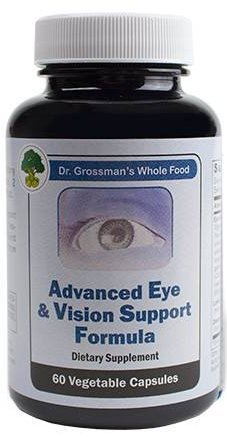 Advanced Eye & Vision Support Formula (whole food) 60 vcaps Advanced Eye & Vision Support Formula (whole food) 60 vcapsWhole food, wild crafted herbal vegetarian formula with vision antioxidants, chemical- and preservative-free. |
Essential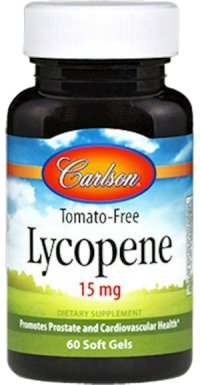 Lycopene 15 mg 60 gels Lycopene 15 mg 60 gelsLycopene 15 mg 60 gels - tomato free |
Essential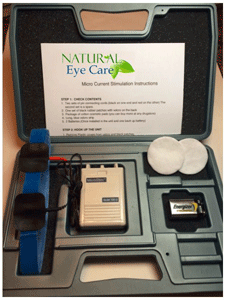 Microcurrent Stimulation 100ile Purchase Option Microcurrent Stimulation 100ile Purchase OptionHelps improve circulation & reduce waste build-up. |
Essential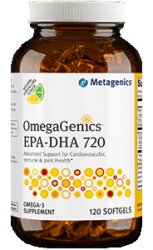 OmegaGenics™ EPA-DHA 720 Lemon 60 gels OmegaGenics™ EPA-DHA 720 Lemon 60 gelsPotent toxin-free fish oil for eye / overall health. |
Essential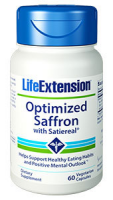 Optimized Saffron w/ Satiereal® 60 vcaps Optimized Saffron w/ Satiereal® 60 vcapsSource of carotenoids, antioxidants safranal and crocin. |
Essential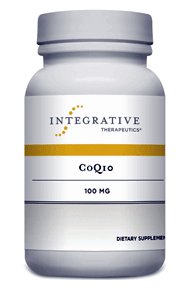 CoQ10 100 mg 60 gels CoQ10 100 mg 60 gelsCoenzyme Q10 (CoQ10) (ubiquinone 10) 100 mg per gelcap. |
| Very Important Dr. Grossman’s Bilberry/Ginkgo Combination 2oz (60ml) |
| Important Macula Support Homeopathic Pellets |
The condition arises through gene mutations and can cause conditions such as autosomal recessive Stargardt disease, cone-rod dystrophy, fundus flavimaculatus, retinitis pigmentosa and macular degeneration. This type of gene mutation is diagnosed in 1 in 20,000 children over 6, usually identified before age 20.
Conventional Treatment
Currently, there is no effective treatment for Stargardt disease, although in the future bone marrow stem cell injections may be a therapy. Research does suggest that supplementation with betacarotene and Vitamin A should be avoided as those with Stargardt have difficulty breaking down this vitamin in the eyes.6 This can result in additional toxicity to the retina.
Diagnostic evaluation of Stargardt disease is based on family history, visual acuity, fundus examination, visual field testing, color testing, electroretinography (ERG), optical coherence tomography (OCT), fundus photo of the retina, and fluorescein angiography. Genetic testing is currently not performed on a routine basis.
Current research shows that UV-protective sunglasses can help slow the progression of Stargardt disease. Researchers have observed that mice with a mutation of their ABCR gene who were reared in dark environments had almost no lipofuscin deposits. Researchers are investigating whether injection of human embryonic stem cells has some benefit.7
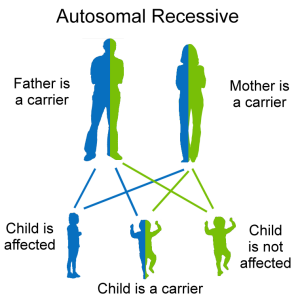 Scientists at Columbia University found that
they could treat mice with ABCA4 mutations with vitamin A which had been enriched with deuterium (a stable hydrogen isotope) and found that the clumping
effect of vitamin A was slowed considerably.1, 2
Scientists at Columbia University found that
they could treat mice with ABCA4 mutations with vitamin A which had been enriched with deuterium (a stable hydrogen isotope) and found that the clumping
effect of vitamin A was slowed considerably.1, 2
Columbia University is also working with a synthetic form of vitamin A, called ALK-001, that isn’t readily converted into lipofuscin (in Phase II s of this writing).8 As part of the natural biological processes in the eye, vitamin A transforms chemically. Molecules of vitamin A sometimes bond to other vitamin A molecules and create clumps or deposits called “dimers." These dimers are found both in the elderly with AMD and in young children with Stargardt's. Researchers are now working on the structure of vitamin A itself. If it is possible to reduce vitamin A’s tendency to clump within the eye, scientists might be able to create a new therapy for Stargardt's.9, 10
Gene therapy trials are also underway as of this writing.11
Complementary Treatment
Taking targeted supplements and establishing healthy lifestyle habits are still helpful at any stage of Stargardt disease, keeping in mind that the preservation of vision and the potential level of vision improvement is based on the level of vision the patient has at the time of incorporating complementary approaches. Antioxidants are essential to maintaining healthy vision, but at the same time, vitamin A and beta-carotene should be avoided. Also, carotenoids that can be converted to vitamin A should be minimized. However, there are certain non-vitamin-A-converting carotenoids that can be very useful in helping protect the photoreceptor cells in the retina. These include lutein, zeaxanthin, meso-zeaxanthin, astaxanthin, and lycopene, all of which are not converted to vitamin A in the body.
- Favor the carotenoids that do not convert to vitamin A: lutein, zeaxanthin, astaxanthin and lycopene.
- No extra vitamin A: People with Stargardt cannot make an enzyme to get rid of the waste products from metabolized Vitamin A analogs and the build up of these waste products leads to the death of retinal cells, so supplementing with Vitamin A should be avoided.3
- Vitamin A precursors Also avoid the carotenoids in supplements and foods that convert to vitamin A: beta-carotene, alpha-carotene, and beta-cryptoxanthin.
- Yellow foods. These carotenoids are typically found in yellow foods, such as corn and bell peppers, and are present in yellow-colored dairy products, such as egg yolks and butter, cantaloupe, mangoes, papaya, carrots, and sweet potatoes.
- Green foods. Other foods to watch out for: peppers (hot and red), raw lettuce, kale, spinach, dandelion greens, pokeberry shoots, mustard greens, turnip greens, Chinese cabbage, chard, collards, watercress, beet greens, chicory, parsley, basil. (Ordered by content [.063 to .025 grams/200 calorie serving]). See detailed info. Tomatoes, asparagus, broccoli, celery and other cabbages are also high in beta-carotene, but less so.
- Limit meats highest in vitamin A/Beta-carotene: Beta-carotene is stored in the liver so avoid eating liver, especially moose liver, turkey liver, and duck liver as well as veal (ordered by content [1000043IU to 53951IU per 200 calorie serving]): See detailed info.
- Limit vegetables highest in vitamin A: hot taco sauce, broccoli, peppers, carrots, mustard spinach, lettuce, kale, pumpkin, spinach, dandelion greens, pokeberry shoots, turnip and mustard greens, Chinese cabbage, corn salad, chard, collards, coriander/cilantro, watercress, beet greens, winter squash, lambsquarters. (ordered by content [1000043IU to 53951IU per 200 calorie serving]): See detailed info. Tomato, amaranth greens, and purslane are also high in vitamin A, but less so.
- Limit fruits highest in Vitamin A: cantaloupe, apricots, Surinam cherry, tangerines, loquats, ohelo berries , grapefruit, sour cherries, persimmons, plums, peaches, watermelon, passion fruit juice, ground cherries, mango nectar, rose apples. (Lesser amounts, ordered by content [19899IU to 2712IU per 200 calorie serving]). See detailed info.
- Alpha and gamma carotene also has some vitamin A activity, but not as much as beta-carotene. Beta-carotene produces twice as much vitamin A as alpha-carotene.
- Limit saturated fat. Eating greater amounts of saturated fat and cholesterol appear to increase the risk of Stargardt.
- Include Omega-3 fatty acids. Stargardt patient diets have been found to be deficient in EPA and DHA, omega-3 fatty acids. Supplementation with DHA may be helpful.4
- Some research indicates that Microcurrent Stimulation (MCS) can be helpful. 5
Footnotes
See research on Stargardt disease. In addition, some research on macular degeneration may be relevant.
1. Deuterium Enrichment of Vitamin A at the C20 Position Slows the Formation of Detrimental Vitamin A Dimers in Wild-type Rodents,
Yardana Kaufman, et al, March 11, 2011 The Journal of Biological Chemistry, 286, 7958-7965.
2. C20-D3-vitamin A Slows Lipofuscin Accumulation and Electrophysiological Retinal Degeneration in a Mouse Model of Stargardt Disease,
Li Ma, et al, March 11, 2011 The Journal of Biological Chemistry, 286, 7966-7974.
3. Francesco Sofi, et al., Dietary profile of patients with Stargardt's disease and Retinitis Pigmentosa: is there a role for a nutritional approach? BMC Ophthalmology, January, 2016.
4. Giuseppe Querques, Pascale Benlian, Bernard Chanu, et al, DHA supplementation for late onset Stargardt disease: NAT-3 study, Clinical Ophthalmology, June, 2010.
5. Edward Paul, O.D., Ph.d., et al, Medicine, The Treatment of Retinal Disease With MCS and Nutritional Supplementation, International Society for
Low-Vision Research and rehabilitation at the Low Vision Congress in Gothenberg, Sweden 2002.
6. Sofi, F., Sodi, A., Franco, F., Murro, V., Biagini, D., et al. (2016). Dietary profile of patients with Stargardt's disease and Retinitis Pigmentosa: is there a role for a nutritional approach? BMC Ophthalmol, Jan 22;16:13.
7. National Eye Institute. Facts About Stargardt Disease. Retrieved Apr 16 2018 from https://nei.nih.gov/health/stargardt/star_facts.
8. Clinicaltrials. Phase 2 Tolerability and Effects of ALK-001 on Stargardt Disease (TEASE). Retrieved Dec 04 2017 from https://clinicaltrials.gov/ct2/show/NCT02402660.
9. Ma, L., Kaufmann, Y., Zhang, J., Washington, I. (2010). C20-D3-vitamin A Slows Lipofuscin Accumulation and Electrophysiological Retinal Degeneration in a Mouse Model of Stargardt Disease. J Biol Chem, Mar 11;286(10) 7966-7974.
10. Saad, L., Washington, I. (2016). Can Vitamin A be Improved to Prevent Blindness due to Age-Related Macular Degeneration, Stargardt Disease and Other Retinal Dystrophies? Adv Exp Med Biol, 2016;854:355-61.
11. Blindness.org. Gene Therapy Clinical Trial Underway for Stargardt Disease. Retrieved Dec 04 2017 from https://www.blindness.org/sites/default/files/pages/pdfs/Advances-Stargardt-March-2017.pdf.
 info@naturaleyecare.com
info@naturaleyecare.com



 Home
Home



 Vision
Vision Vision
Vision



 Health
Health Health
Health Research/Services
Research/Services Pets
Pets About/Contact
About/Contact


